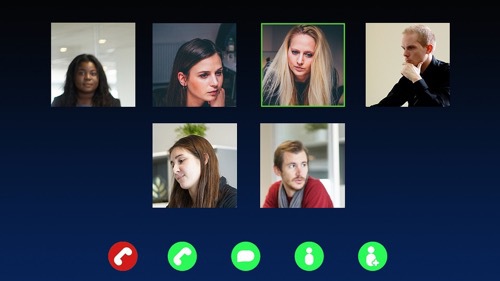As social distancing measures move into their sixth month, we’re all missing the informal connections that crop up throughout our day. Social gatherings are seriously curtailed, workplaces are shuttered (or operating only with essential workers) and vulnerable populations are taking extra care to isolate. Even essential workers are discouraged from “hanging out” with each other on the job. Connection is a basic human need. Without it, we feel isolated, and such detachment can create a kind of “background” drain on your energy, like an unnoticed app running on your phone that’s depleting its battery life.
Are You Causing Zoom Burnout?
As a leader, you may even inadvertently contribute to Zoom burnout by calling unnecessary meetings. While it’s normal to want connection, both for human reasons and to keep your team accountable, feelings of isolation may drive you to call a Zoom meeting a little too often. It’s a natural impulse and one that’s rooted in good intentions. But let’s examine those motivations for a moment.
In a virtual teaming environment, you may feel like if you’re not holding a meeting, people will forget you’re leading them, but that’s not the case. This worry is what Dana Theus calls an “out of power” mindset that sometimes causes us to call a meeting. She points out that the mere act of calling a meeting isn’t leadership. Leadership shows up in a variety of ways beyond leading meetings.
So, instead of defaulting to “Let’s hop on a Zoom meeting to sort this out,” consider for a moment why you’re calling a meeting. Is it to gather information, check in with team members, share good news, collaborate on an idea? Of course, it’s natural to want to connect to your team members. And you should! But you don’t always need to do it en masse. Perhaps a quick text or phone call would be better. Consider this: if you have a team of six and you call a one-hour meeting, you’re using seven hours of human potential to “check in.” But when you become more intentional about the reason for the meeting, you may find a different way to create that connection, and avoid creating Zoom burnout for your team.
Want to know more about running an effective meeting — in person, or remotely? Check out InPower’s AMA video, “How Do I Run a Great Meeting?” in which Dana and I discuss five “out of power” mindsets that derail effective meeting leadership.
Avoiding Zoom Burnout for the Rest of Us
Of course we’re not all in charge of the meetings we feel we “have” to attend. So what do you do when your schedule is full of meetings other people schedule? Here are some quick tips to help you avoid meeting burnout for everyone else:
- Know why you’re attending a meeting before confirming your attendance. Even if it’s a staff meeting, get clear with your boss on your role, what you’re contributing and whether there’s a portion of the meeting you can skip. Often just asking these questions helps the leader think more intentionally about structuring the meeting.
- Use meetings to help shape your personal brand reputation. Show up with a clear idea of what you plan to contribute. Look for an opportunity to contribute in the first 15 minutes (when research says you’re most likely to be seen as an influencer.) Show up with a clear idea of what you want to take away. Engage proactively to ensure you get this result.
- Try to schedule breaks for yourself and block your calendar so others can’t put you into back-to-back sitting marathons. The human body wasn’t meant for nonstop Zoom!
Battling Zoom burnout is a fact of the modern workday. Get proactive about fighting it! Everyone else struggling with the same challenge will thank you!







